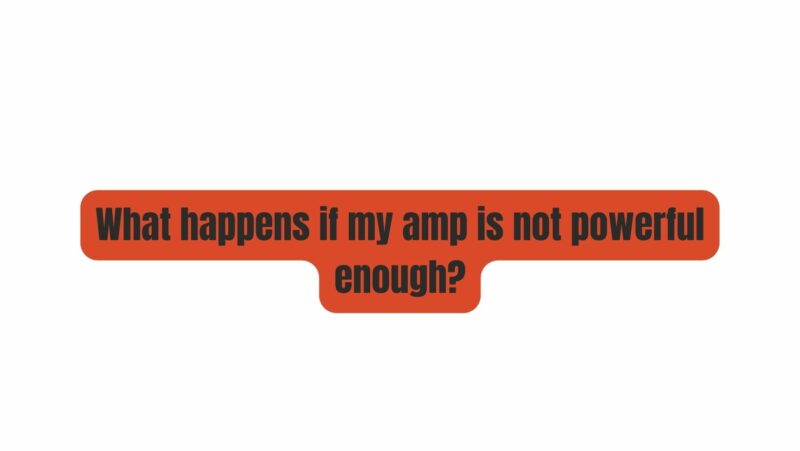
So, your amp is dead silent. No thumping bass, no soaring guitar riffs, just…nothing. It’s a frustrating situation any music lover dreads. Before you panic, take a deep breath. Figuring out why your amp isn’t getting power might be easier than you think. This guide will walk you through the common culprits and help you get your sound system back on track.
There are several reasons why your amplifier might not be receiving power. It could be something as simple as a loose power cable or a tripped circuit breaker, or it might be a more complex issue like a blown fuse within the amp itself. Don't worry, we'll cover all the bases, from the obvious to the more obscure.
Understanding the basics of how an amplifier receives power is a good starting point. Your amp needs a steady flow of electricity to function. This power travels from your wall outlet, through the power cable, and into the amplifier's internal circuitry. Any disruption along this path can result in a powerless amp. Think of it like a river: if there’s a dam or blockage somewhere along the way, the water won't reach its destination.
Troubleshooting amp power issues has been a common challenge for musicians and audio enthusiasts since the advent of amplified music. Early amplifiers were particularly susceptible to power problems due to less robust components and simpler designs. Today's amps are more sophisticated, but the fundamental principles remain the same: a stable power source is essential. Addressing power problems quickly is crucial to prevent potential damage to your equipment and ensure uninterrupted enjoyment of your audio setup.
A common issue is the amp not turning on at all. This could indicate a problem with the power supply, a blown fuse, or even a faulty power switch. Another issue might be the amp turning on but producing no sound, suggesting a problem further down the signal chain, though still potentially related to a power delivery issue within the amp's internal circuitry. Finally, intermittent power or crackling sounds could point to loose connections or failing components within the amp.
Before diving into the more complex checks, always start with the basics. Ensure the power cable is securely plugged into both the amp and the wall outlet. Try a different outlet to rule out a problem with the wall socket itself. Also, check your amp’s power switch and any associated power conditioners or surge protectors.
If the basic checks don't reveal the problem, it's time to move to the next level. Check your home's circuit breaker box for any tripped breakers. A tripped breaker will cut off power to the entire circuit, including the outlet your amp is plugged into. If a breaker has tripped, reset it and see if your amp powers on.
Next, inspect the fuse in your amplifier. Most amps have a fuse located near the power input. If the fuse is blown, replace it with a fuse of the same rating. Using a higher-rated fuse can be dangerous and could damage your amp. Refer to your amp's manual for the correct fuse type and rating.
If you’ve tried all these steps and your amp still isn’t receiving power, it’s likely a more complex internal issue. At this point, it’s best to consult a qualified amplifier technician. Attempting to repair internal components yourself could be dangerous and further damage your equipment.
Advantages and Disadvantages of Troubleshooting Yourself
| Advantages | Disadvantages |
|---|---|
| Saves money on repair costs (for simple fixes). | Risk of further damage if not done correctly. |
| Quick solution for minor problems. | May not be able to diagnose complex issues. |
Frequently Asked Questions:
Q: Why is my amp not turning on even after checking the power cable? A: The issue could be a blown fuse, a tripped circuit breaker, or a faulty power switch.
Q: My amp turns on but there's no sound. What could be wrong? A: This could indicate a problem within the amp's internal circuitry, a faulty speaker connection, or an issue with the input signal.
Q: I hear a crackling sound from my amp. What does it mean? A: Crackling sounds often suggest loose connections, a failing component, or a problem with the speaker.
Q: How do I check the fuse in my amp? A: Refer to your amp's manual for the fuse location. It's usually near the power input.
Q: Can I use a higher-rated fuse in my amp? A: No, using a higher-rated fuse can be dangerous and damage your amp. Always use the correct fuse rating.
Q: When should I consult a technician? A: If you’ve tried basic troubleshooting and the problem persists, it’s time to seek professional help.
Q: What tools do I need for basic troubleshooting? A: A replacement fuse of the correct rating and a screwdriver (for accessing the fuse) are usually sufficient.
Q: My amp makes a humming sound but no music, what's wrong? A: This could be a grounding issue, a problem with the input source, or a fault within the amp's circuitry.
A silent amp can be a major inconvenience, but by systematically troubleshooting the potential causes, you can often pinpoint the issue and get your music playing again. Remember to always prioritize safety and consult a professional if you're unsure about any step of the process. A functioning amplifier is the heart of any good sound system, so keeping it powered up and running smoothly is essential for an optimal listening experience.
Exploring gateway road portland oregon
Anime black man profile pictures a digital identity exploration
The enduring appeal of i cant help myself sugar pie honey bunch by the four tops











